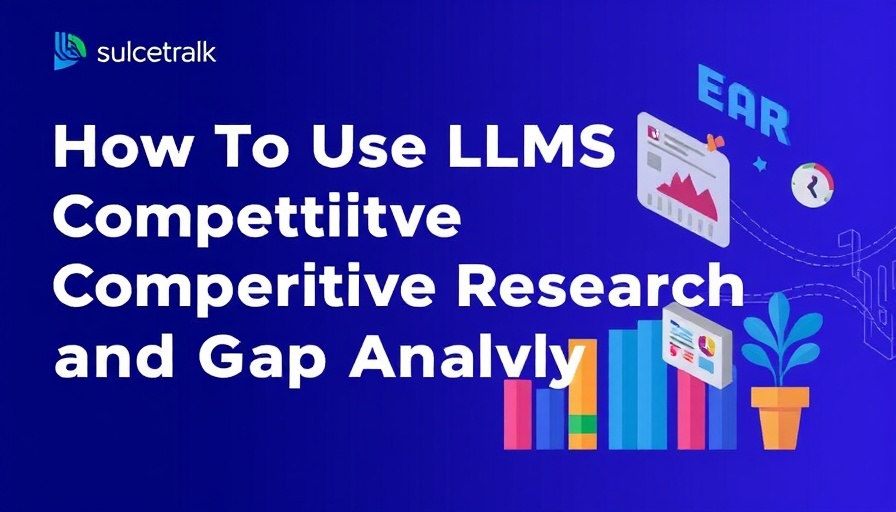
Unlocking Competitive Insights: A New Era of Research
In the fast-paced landscape of digital marketing, understanding your audience and competitors is paramount. Traditional methods of audience analysis, while valuable, often involve inefficient processes that can lead to missed opportunities. This is where Large Language Models (LLMs) come into play, transforming the way marketers and researchers conduct competitive analysis.
Why LLMs Are Game-Changers in Competitive Research
Imagine navigating a vast ocean of data with ease—this is akin to how LLMs assist marketers in gathering and interpreting competitor data swiftly. By analyzing competitor websites and unearthing essential consumer insights, LLMs enhance the quality of strategic decision-making. Tools like Microsoft Copilot and Google Gemini are now able to analyze websites beyond simple keywords; they assess audience behaviors, allowing a brand to fine-tune its strategies accordingly. As highlighted in recent articles, LLMs such as GPT-4o are revolutionizing this landscape, making traditional hard-to-reach insights more accessible.
Real-World Applications: Learning from Competitors
To illustrate, let’s take a closer look at how LLMs can be utilized through the lens of a hypothetical pet food company, akin to Pooch & Mutt. By asking an LLM about their primary offerings, one could promptly learn that they specialize in functional dog food tailored for health issues. Insights like these provide a clearer picture of their unique selling propositions (USP), which can be leveraged to enhance one's own product positioning and offerings.
Transforming Data Analysis: The Efficiency of LLMs
Gathering insights manually is a labor-intensive task, often wrought with challenges. Yet LLMs can absorb complex data and suggest patterns that human analysts might overlook. For instance, LLMs can synthesize information from consumer feedback across various platforms, such as social media discussions and reviews, and present not only trends but actionable insights embedded within these discussions. A recent study reported an impressive accuracy rate of up to 93% in sentiment analysis by LLMs, thereby further streamlining this process.
Future Predictions: The Increasing Role of LLMs
As LLM technology advances, its potential to create digital twins of marketplaces is becoming more pronounced. This could lead to unprecedented levels of strategic testing and optimization in marketing. The implications of these capabilities are substantial, as brands will be able to predict trends, and consumer behaviors, and even conduct proactive market adjustments based on real-time data insights.
Integrating LLMs: Practical Steps for Marketers
It’s clear that LLMs can redefine normal operating methods in competitive research. Marketers should consider integrating LLM tools into their workflows. This integration involves asking the right questions to these AIs, developing prompts that yield detailed outputs, and ensuring the insights are aligned with consumer trends and behaviors. Start by auditing your main competitors with a clear plan of exploration—by identifying their strengths and weaknesses, marketers can better position their offerings against these competitors.
Conclusion: Taking Action in an Evolving Landscape
The integration of LLMs into competitive research denotes a significant shift in how data is utilized for strategic advantage. The more businesses embrace these AI tools, the greater the competitive edge they can achieve. As the market evolves, staying ahead of consumer insights and trends will demand not only effective use of LLMs but also a commitment to continuous learning and adaptation.
For marketers eager to harness the power of LLMs, now is the time to start. Integrate these tools into your research process, tap into their potential for valuable consumer insights, and transform your competitive analysis strategies into a proactive, data-driven approach.
 Add Row
Add Row  Add
Add 






Write A Comment